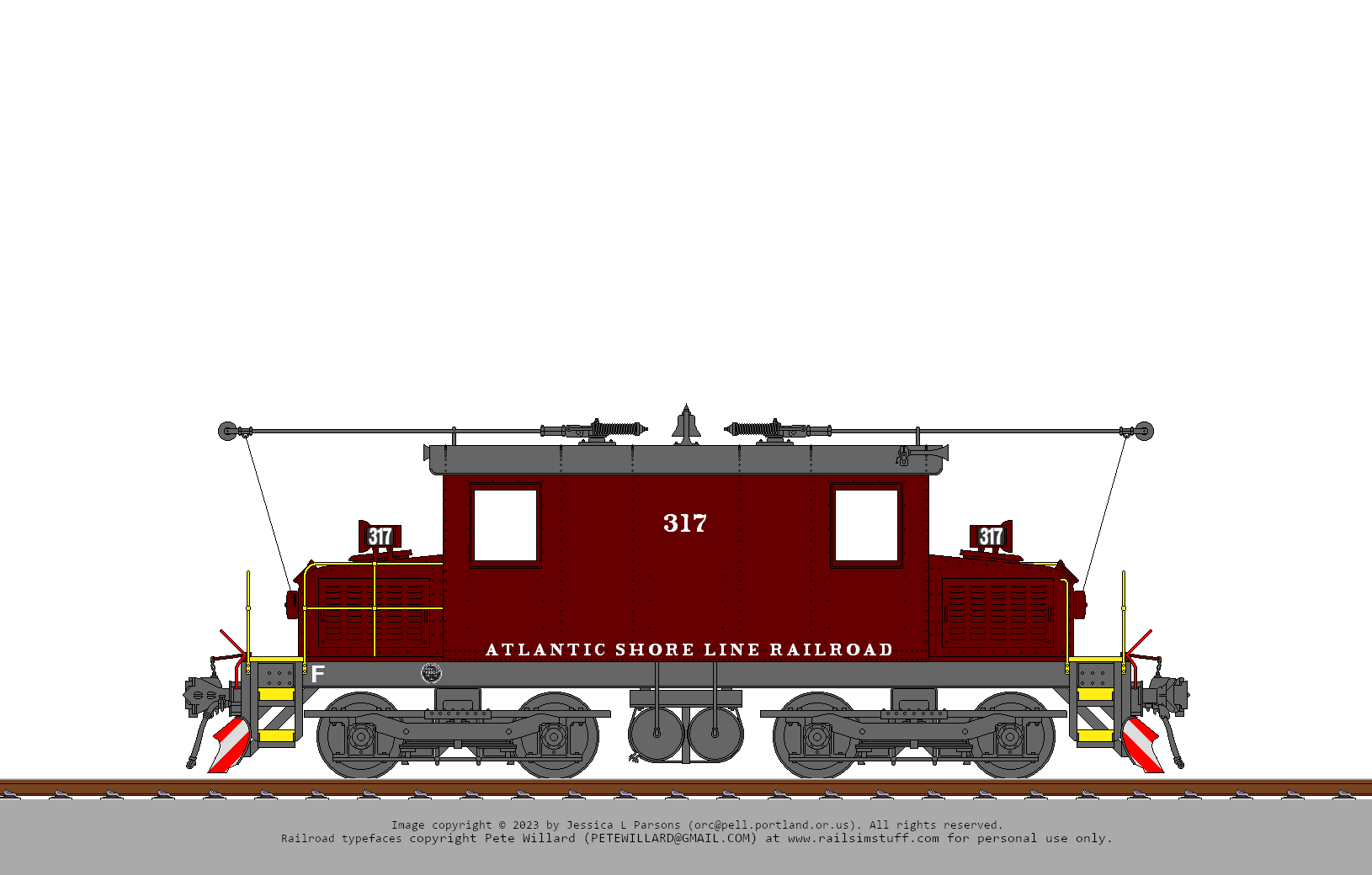In 1947, York Utilities abandoned their last trolley service in the towns of Sanford & Springvale, leaving only freight operations along River & Main streets (with a little bit of private ROW south of Sanford.) In 1949, York Utilities decided against running freight service and sold the surviving trackage to a consortium of local businesses & investors (including the PV&T, which connected with York Utilities at Springvale & wanted to keep the interchange alive); the new owners decided – after some enthusiastic encouragement from the PV&T’s agent – to keep the wire up and continue as an electric railway.
York Utilities didn’t want the railroad to keep operating under the YU name, so it was renamed the Atlantic Shore Line Railroad, operating with a pair of Laconia-built wooden motors (#101 & #102; a third Laconia-built motor had been donated to the new Seashore Trolley Museum before York Utilities sold the railroad) until the late 1950s, when these elderly motors reached a state of complete disrepair and were salvaged for parts, then scrapped.
Fortuitously, the PV&T subsidiary South Loren Railway was being reelectrified to 3000VDC from 600VDC, and they had a handful of motors that were up for grabs. The PV&T arranged to sell – for $1 and stock – SLR #317 to the ASL, and after a quick stop at the PV&T’s Portland shops to add pilots & remove the third rail shoes, this new motor starting handling freight duties on the line.
The next 50 years saw first the closure of most of the mills in Sanford, but some of them hung on until the 1970s, when bicentennial fever saw trolleys running along the line (bringing in enough revenue from grants to keep the line nominally profitable), so when some new shippers moved in in the mid 1980s there was still a railroad to deliver and pick up freight.
This was not good enough for the investors, so they gradually sold their shares of the railroad to the PV&T, and by the turn of the century the PV&T (and, oddly, the Seashore Trolley Museum, which had been bequeathed 20% of the railroad) had total control of the line.
The PV&T is willing to underwrite the losses on the line (in the probably vain hope that industry will return to southern Maine) and the trolley museum is delighted to have a second line that they can run the occasional excursion on, so the Atlantic Shore Line continues to operate (with a single motor, a sweeper, and a MOW car that was built on the frame of York Utilities #101 after it was scrapped) to this day.
Unofficially, it’s a PV&T subsidiary, but the minority stockholders want it to stay a separate railway for regulatory reasons, so a separate railway it remains, even though the head offices are now in Montréal and the railway shops are in Portland.
